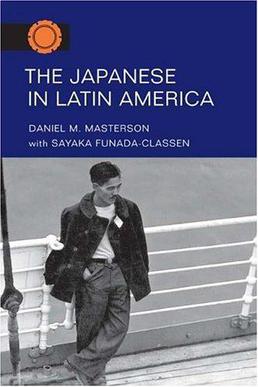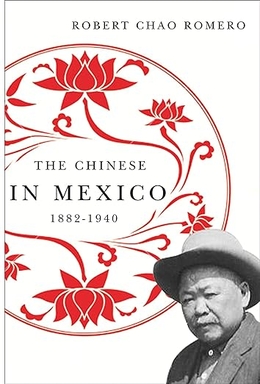Related Research Articles

Chinese Peruvians, also known as tusán, are Peruvian citizens whose ancestors came from China.
Chinatowns in Latin America developed with the rise of Chinese immigration in the 19th century to various countries in Latin America as contract laborers in agricultural and fishing industries. Most came from Guangdong Province. Since the 1970s, the new arrivals have typically hailed from Hong Kong, Macau, and Taiwan. Latin American Chinatowns may include the descendants of original migrants — often of mixed Chinese and Latino parentage — and more recent immigrants from East Asia. Most Asian Latin Americans are of Cantonese and Hakka origin. Estimates widely vary on the number of Chinese descendants in Latin America but it is at least 1.4 million and likely much greater than this.
Chinese Cubans are Cubans of full or mixed Chinese ancestry who were born in or have immigrated to Cuba. They are part of the ethnic Chinese diaspora.
Asian Latin Americans are Latin Americans of Asian descent. Asian immigrants to Latin America have largely been from East Asia or West Asia. Historically, Asians in Latin America have a centuries-long history in the region, starting with Filipinos in the 16th century. The peak of Asian immigration occurred in the 19th and 20th centuries. There are currently more than four million Asian Latin Americans, nearly 1% of Latin America's population. Chinese, Japanese, and Lebanese are the largest Asian ancestries; other major ethnic groups include Filipinos, Syrians, Koreans and Indians, many of whom are Indo-Caribbean and came from neighboring countries in the Caribbean and the Guianas. Brazil is home to the largest population of East Asian descent, estimated at 2.08 million. The country is also home to a large percentage of West Asian descendants. With as much as 5% of their population having some degree of Chinese ancestry, Peru and Mexico have the highest ratio of any country for East Asian descent. Though the most recent official census, which relied on self-identification, gave a much lower percentage.
Sangley and Mestizo de Sangley are archaic terms used in the Philippines during the Spanish colonial era to describe respectively a person of pure overseas Chinese ancestry and a person of mixed Chinese and native Filipino ancestry. The Sangley Chinese were ancestors to both modern Chinese Filipinos and modern Filipino mestizo descendants of the Mestizos de Sangley, also known as Chinese mestizos, which are mixed descendants of Sangley Chinese and native Filipinos. Chinese mestizos were mestizos in the Spanish Empire, classified together with other Filipino mestizos.

Filipinos are citizens or people identified with the country of the Philippines. The majority of Filipinos today are predominantly Catholic and come from various Austronesian peoples, all typically speaking Tagalog, English, or other Philippine languages. Despite formerly being subject to Spanish colonialism, only around 2–4% of Filipinos are fluent in Spanish. Currently, there are more than 185 ethnolinguistic groups in the Philippines each with its own language, identity, culture, tradition, and history.

In the Philippines, Filipino Mestizo, or colloquially Tisoy, is a name used to refer to people of mixed native Filipino and any foreign ancestry. The word mestizo itself is of Spanish origin; it was first used in the Americas to describe people of mixed Amerindian and European ancestry. Currently and historically, the Chinese mestizos were and are still ordinarily the most populous subgroup among mestizos; they have historically been very influential in the creation of Filipino nationalism. The Spanish mestizos also historically and currently exist as a smaller population, but remain a significant minority among mestizos which historically enjoyed prestigious status in Philippine society during Spanish colonial times.

Immigration to Mexico has been important in shaping the country's demographics. Since the early 16th century, with the arrival of the Spanish, Mexico has received immigrants from Europe, Africa, the Americas, and Asia. Today, millions of their descendants still live in Mexico and can be found working in different professions and industries.

Chinese people in Spain form the ninth-largest non-European Union foreign community in Spain. As of 2009, official figures showed 145,425 Chinese citizens residing in Spain; however, this figure does not include people with origins in other Overseas Chinese communities, nor Spanish citizens of Chinese origin or descent.

Filipino Mexicans are Mexican citizens who are descendants of Filipino ancestry. There are approximately 1,200 Filipino nationals residing in Mexico. In addition, genetic studies indicate that about a third of people sampled from Guerrero have Asian ancestry with genetic markers matching those of the populations of the Philippines.
Chinese Caribbean people are people who are predominantly of Han Chinese ethnic origin living in the Caribbean. There are small but significant populations of Chinese and their descendants in all countries of the Greater Antilles. They are all part of the large Chinese diaspora known as Overseas Chinese.

Asian Peruvians, primarily referring to those of Chinese and Japanese descent. Around 36,000 constitute some 0.16% of Peru's population as per the 2017 Census in Peru. In the 2017 Census in Peru, only 14,223 people self-reported tusán or Chinese ancestry, while only 22,534 people self-reported nikkei or Japanese ancestry. However, according to the 2009 census, it was estimated that 5% of the 29 million Peruvians in 2009 had Chinese roots and ancestry, while 160,000 Peruvians in 2015 had Japanese roots and ancestry. Today it is believed that the Asian population in Peru would be from 3 to 10% of the population.

Japanese Mexicans are Mexicans of Japanese ancestry. Organized Japanese immigration to Mexico occurred in the 1890s with the foundation of a coffee-growing colony in the state of Chiapas. Although this initiative failed, it was followed by greater immigration from 1900 to the beginning of World War II. However, it never reached the levels of Japanese immigration to the Americas such as Brazil or the United States.

Chinese immigration to Mexico began during the colonial era and has continued to the present day. However, the largest number of migrants to Mexico have arrived during two waves: the first spanning from the 1880s to the 1940s and another, reinvigorated wave of migrants arriving since the early 21st century. Between 1880 and 1910, during the term of President Porfirio Díaz, the Mexican government was trying to modernize the country, especially in building railroads and developing the sparsely populated northern states. When the government could not attract enough European immigrants, it was decided to allow Chinese migrant workers into the country. At first, small Chinese communities appeared mostly in the north of the country, but by the early 20th century, Chinese communities could be found in many parts of the country, including the capital of Mexico City. By the 1920s, the number of Chinese in the country was about 26,000.

Indian Mexicans are Mexican citizens who are descendants of migrants from India.

The Japanese in Latin America is a 2004 book published by the University of Illinois Press about Japanese Latin Americans. The author is Daniel Masterson, while Sayaka Funada-Classen gave research assistance related to the Japanese language. The book discusses all of the major Japanese populations in Latin America and some other groups of Japanese diaspora who are not as well known. The Japanese populations of Argentina, Bolivia, Brazil, Chile, Colombia, Paraguay, Peru and Uruguay in South America, Cuba and the Dominican Republic in the Caribbean, Central America, and Mexico are all discussed in this book.

The Chinese in Mexico, 1882–1940 is a 2010 book by Robert Chao Romero, published by the University of Arizona Press, about the history of Chinese immigration to Mexico. This is the first English-language monograph written about Chinese immigration to Mexico. Anju Reejhsinghani of University of Wisconsin-Stevens Point described it as "a social history of the small but influential Chinese merchant and laboring community in northern Mexico in the first half of the twentieth century." Erika Lee of the University of Minnesota stated that because much of the existing literature on Asian immigration to North and South America discusses the United States, this book "fills an enormous historiographical gap."

Asian Mexicans are Mexicans of Asian descent. Asians are considered cuarta raíz of Mexico in conjunction with the two main roots: Native and European, and the third African root.
John Kuo Wei Tchen, also known as Jack, is a historian of Chinese American history and the Inaugural Clement A. Price Chair in Public History and Humanities at Rutgers University.

Chino was a casta term used in colonial Mexico to refer to people of mixed ancestry. In the eighteenth century, individuals of mixed Amerindian and African ancestry came to be called chinos.
References
- Tchen, John Kuo Wei (New York University). "The Chinese in Latin America and the Caribbean."(Book review) (Archive). New West Indian Guide , Winter, 2012, Vol.86(3-4), p. 371(4) [Peer Reviewed Journal] ISSN 1382-2373 - Cengage Learning